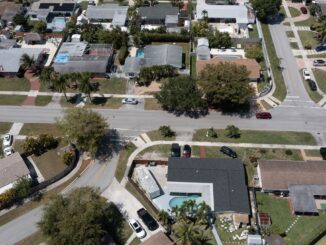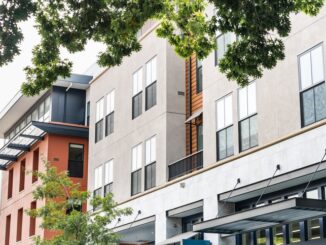
The dramatic rise in underproduction is a key factor, according to a report from Up for Growth.
“I am here because I believe housing should always be an opportunity and never an obstacle,” said Mike Kingsella, CEO of Up for Growth, during the launch of a report on housing underproduction in the U.S.
It is well known that there are not enough affordable and suitable housing units for all Americans. A new “Housing Underproduction in the U.S.,” quantifies just how lacking the housing supply is and outlines a policy framework for creating adequate inventories.
According to the report, the U.S. underproduced 3.8 million units of housing between 2012 to 2019. The shortfall is double what it is was seven years ago.
Further, the report finds, while four years ago, housing affordability mostly beset markets on both coasts and the Southwest, it is now a problem of national proportion, with 47 states and Washington, D.C., having seen underproduction rise.
In addition to the “artificial barriers” of zoning and NIMBYism, Kingsella said, the problem is exacerbated by crumbling infrastructure, racial inequality, climate change and climate events. And, while undersupply impacts residents at all income levels, lower-income and residents of color suffer the most.
Up for Growth is a recently formed coalition of housing industry stakeholders, including builders, trade associations, resident advocates and others, “focused on social justice, the environment and affordability.” The launch event at the National Press Club event also featured leading industry stakeholders and housing experts as guest speakers and panelists.
“The supply of housing, owned and rentals, has long lagged the demand,” said keynote speaker Jared Bernstein, a member of the White House Council of Economic Advisors. “The word ‘long’ is key here. It is key to understanding the underproduction. Unlike many of the supply chain snarls that occurred as a result of the pandemic, this one has been over a decade in the making.”
Undersupplied Metros Are Multiplying
Since housing is typically regulated and built locally, the analysis was conducted on a city and metro level. Up for Growth found 169 metros (up from 100 in 2012) underproduced housing units, and 230 metros experienced increased underproduction between 2012 and 2019.
While the report sounds the alarm, it also revealed some improvements. Eleven markets that had underproduction in 2012 have reached adequate housing production; 14 markets that were underproducing in 2012 are in the recovery process, and 54 markets that were meeting needs in 2012 were meeting or exceeding needs through 2019.
Analyzing Underproduction
Drivers of underproduction vary from metro to metro. The report identifies three root causes: missing households that would have formed if units were available and affordable; insufficient availability; and uninhabitable units.
“In Detroit, 30 percent of underproduction is uninhabitable units,” said Michael Wilkerson, Ph.D., partner ECO Northwest, the technical lead on the report. “(They) don’t need to build.”
The report classifies regions struggling with production into two buckets: those that are “expansive,” growing outward due to high demand and land availability but now feeling the pressures of population growth and a tight housing market (like Austin, Boisie and Las Vegas), and those that are “expensive” due to the lack of land and restrictive zoning (like San Francisco, Seattle and New York).
Homeownership among minority groups has also suffered, the report finds. Between 1970 and 2019, Asian home ownership grew 25 percent, Hispanic homeownership grew 8.9 percent, and homeownership among Black residents decreased 1.2 percent.

How and Where to Produce Housing
If housing development continues on its current pattern, 54 percent of the needed units would be single-family. Forty percent would be “missing middle” and medium-density units, and 6 percent would be towers.
If, on the other hand, a “smart growth” approach of leveraging existing infrastructure and favoring higher-density housing in transit corridors, is applied, 10 percent of the units would be single-family, 61 percent would be missing middle and medium density, and 29 percent would be towers, according to the report.
“A Better Foundation,” as the group’s vision for new production is called, was formed with a racial equity lens, and emphasizes housing choices for communities of color, including home ownership, and “mapping” new housing units in “high-opportunity” neighborhoods at appropriate scale rather than locating them in economically disadvantaged neighborhoods.
High-opportunity neighborhoods would be in close proximity to transportation, employment and other community assets and have a high degree of walkability.
“Housing production cannot just be producing units,” said David Williams, vice president of Real Estate Partnerships and Impact, Lafayette Square. “It needs to be an engine of economic prosperity.”
Pandemic’s Effects on Housing Production
Since the report’s findings span 2012-2019, they do not reflect the huge effects the pandemic and work from home have had on the housing market.
“You are seeing folks leaving high-cost areas because of remote work,” said Len Kiefer, PhD., deputy chief economist, Freddie Mac. “But then that puts additional pressure on those markets. The demand is so strong and the supply issue is rough.”
During the pandemic, the supply of missing households doubled as young adults returned to live with their parents and families merged households, Kiefer said. Now, those individuals are re-emerging in the market to find escalating single-family home prices, higher mortgage rates, and a heated rental market.
How Do We Produce More Units?
President Biden’s Build Back Better program would have funneled $25 billion to states and cities for the construction, revitalization and purchase of affordable homes for low-income people, but that bill failed to get Congressional approval.
States and cities also received billions of relief money, but many spent the funds on government operations.
But some help is on the way.
In April of 2022, President Biden unveiled the Housing Supply Action. A key component of the plan is incentivizing jurisdictions that reform their zoning laws by offering them higher scores in the grant process.
The plan also includes reforms to Low Income Housing Tax Credit and the HOME Investment Partnership Programs and expanding financing options for smaller multifamily properties or “ADUs” (accessory dwelling units) as well as manufactured and modular housing.
“What makes me optimistic is we are at a crisis point,” said Carlos Martín, PhD, David M. Rubenstein Fellow, Brookings Metro. “Humans have a tendency to act only when there is a crisis.”
Source: Multihousingnews.com



